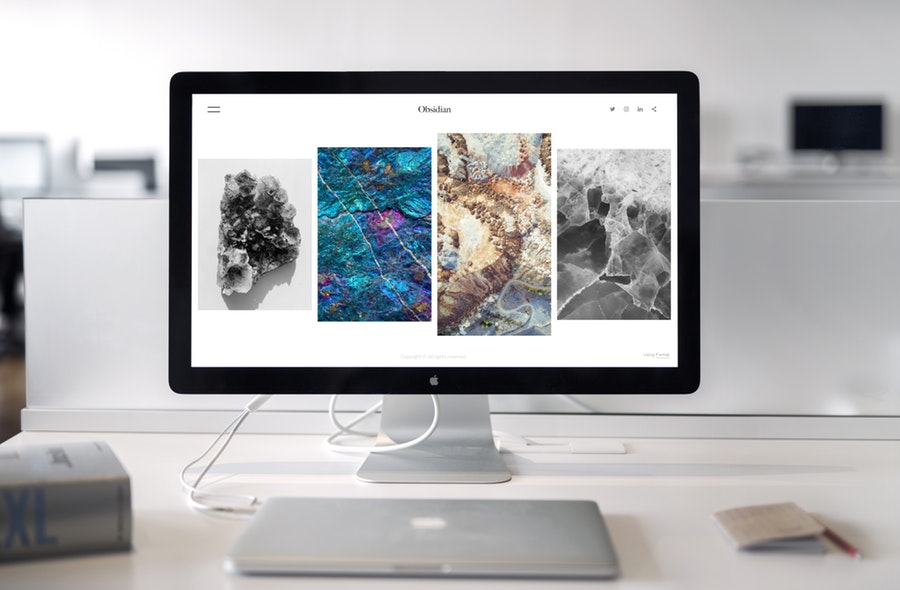Leverage Simplicity In Design To Improve Sales
Reaching an audience and convincing them to buy your product, use your services, or follow your brand involves a multitude of strategies. Search engine optimization (SEO), landing pages, calls to action, lead magnets, and pay-per-click (PPC) ads all demonstrate that digital marketing is a complex field. It can take years to master just one of those strategies. The idea of implementing all of them effectively is overwhelming.
Budding internet entrepreneurs often spend many days fussing over button shapes and colors to squeeze out a few more conversions. If getting involved in that kind of minutia doesn’t thrill you, turn your attention to simplicity.
Simple websites convert better
Back in 2012, Google conducted a study to determine what types of websites users consider attractive. Researchers found that users judge a website as beautiful within 1/50th of a second, and “visually complex” websites were consistently rated as less beautiful than the simple ones.
All those sleepless nights spent tweaking the radius of your buy buttons could have been avoided by creating a simple design.
Elements that support a simple website include:
Fewer images. This point goes against the latest trend in site design, and for good reason. Too many images will get in the way of a visitor’s attempt at navigating your site.
Before placing an image on a website, you should know why you’re using that specific image. The location of each image should also be intentional. If you’re adding images to fill in space, fill out a template, or because it looks good, your images will work against you.
Concise copy. Sentences can be condensed more than you think. Concise copy presents information without beating around the bush. For example, “I think I’m going to have to buy a new pair of shoes” can be condensed to, “I’m buying new shoes.”
Visitors read condensed copy faster and easier than long, drawn out copy. The same is true for product descriptions, especially when your product is purchased by aesthetics. For example, nobody buys engagement rings because of the way they’re described. Purchases are made based on looks and price. A simple, one line description is enough. Anything more would be a distraction.
No stock photos. This is sad news if you’re addicted to stock photo websites, but no matter how cool stock photos are, they don’t help you get sales. There are rare exceptions, but generally speaking stock photos should be avoided completely.
The stock photo industry exists as a platform to help photographers make money. It’s not an industry intended to support web design.
Familiarity. The familiarity principle describes the fact that people tend to prefer what’s familiar. This applies to website design, since users unknowingly develop preferences for the aesthetics and placement of design elements. For example, blogs used to house sidebars on the left but today that feels weird and unfamiliar. We’ve all been conditioned to prefer right-hand sidebars.
This might explain why many squeeze pages do better with the opt-in form located in the upper right corner. It’s not complicated – it’s preference.
Another aspect of familiarity is making sure your website design looks like other designs in the same industry. An in-depth study was performed on the company Skinny Ties when they revamped their site in 2012. Prior to the revamp, their website didn’t even resemble an ecommerce site. The Google study referenced above has before and after screenshots of the Skinny Ties website for reference.
Simple navigation structure. The mega menu craze might be over, but people continue to create complex navigational structures that confuse and frustrate visitors.
Don’t link every page in your navigation menu. Don’t try to categorize all of your content, either. The important pages need to be part of the main menu, but other, internal pages should be made discoverable as a visitor makes their way through your site. Reveal relevant pages to visitors as they proceed. Not all internal pages are relevant to home page visitors.
The best example for this type of navigation is eBay (or any other major retail website). eBay presents basic category navigation as a main menu. When you click on the “electronics” section, brands and sub-categories revealed.
Less is more
In every industry, when experts are called in to save lost sales, the first suggestion they make is to reduce menu items and eliminate complexity. The concept that less is more defies conventional wisdom, but it brings in the money. Moving toward simplicity and away from complexity is an effective marketing strategy of its own.
Source: Social Media Explorer

